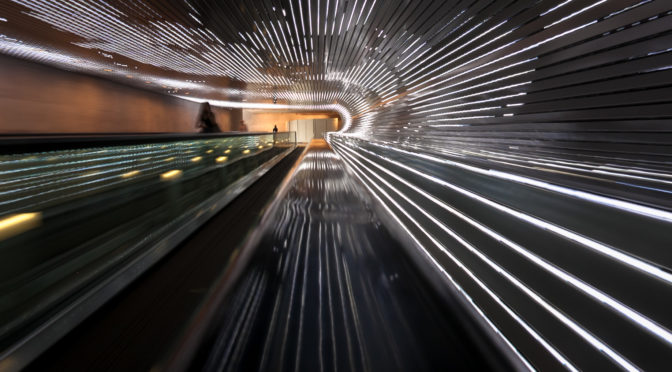Click here for Capital Building: A View from Washington – Part 1
Click here for Capital Building: A View from Washington – Part 2
Not Set in Stone: Memorials for the Future
The National Park Service (NPS), the National Capital Planning Commission (NCPC), and Van Alen Institute collaborated on Memorials for the Future, an international ideas competition that took place between March and September 2016. The goal of the competition was not to directly produce new monuments, but to reimagine how we think about, feel, and experience memorials.
It called for designers, artists and social scientists to develop new ways to commemorate people and events that are more inclusive and flexible, reflect the country’s diversity in history, heritage and culture, and that enrich Washington’s landscape while responding to the limitations of traditional commemoration.
The jury chose four finalist teams – Climate Chronograph, American Wild, The IM(MIGRANT) and VOICEOVER – who offered distinct concepts and approaches.
And although the ideas competition centred on Washington, D.C., its key findings can be employed by any village, town, city or region as a primer on how to choose and place memorials that move beyond the classic ‘Man on a Horse’ motif or historic mural.
Here are the highlights:
Engage the Present and Future as Much as the Past
In Washington today, 25 years must pass before a person’s life may be commemorated, and ten years before a war is eligible for a built memorial. But it is not just the past that warrants reflection. Events that unfold around us every day can be as compelling and culturally important. The tools of memorialization can help people learn about and appreciate recent events, important issues, and on-going trends and experiences that impact their lives directly. New memorial approaches could be useful vehicles for sharing information, collective reflection, and even serve as a call to action.
Allow for Changing Narratives
As time passes, new information is exposed and cultural values shift, sometimes creating disconnects between a memorial’s original message and representation and modern day perceptions. There will always be a need to incorporate perspectives that were either recently developed or previously marginalized. Future memorials need to address this challenge and represent diverse narratives. Only in doing so can a memorial reflect and honor the multiple truths and complex histories of national subjects.
Universal Experiences in Addition to Places, People, and Events
Often memorials commemorate subjects of significant events, important places, or individuals of great accomplishment. While these subjects can yield powerful, enduring memorials—the Lincoln and Vietnam memorials, for example—this leaves opportunity to commemorate more universal experiences shared by many people over time. When we plan future memorials, we have the opportunity to reflect on subjects faced by all people. Indeed, in this competition, the majority of teams commemorated subjects that relate to the public at large and speak to national and even universal experiences.
Use Local Settings for National Issues
Some issues like climate change and immigration may feel abstracted in national debate, but smart design can create real opportunities to engage with and understand these issues in a personal way. Furthermore, as memorial development shifts beyond the National Mall into the city’s neighborhoods, a balance must be found between commemorative space and public space. Here we see an opportunity for memorials that resonate at the local level, making abstract issues immediate for those who encounter these memorials on a daily basis.
Create Memorials with the Public as well as for the Public
Inviting the public to shape memorials, either during the initial planning process or after construction, can help ensure that they are valued by communities in which they reside and that the many perspectives of those communities are well reflected. Our current commemoration process provides opportunities for community engagement and feedback. With the right design, however, the process can go farther, offering individuals the chance to make personal contributions that become a part of the actual memorial itself.
Consider Ephemeral, Mobile, and Temporary Forms
Typically, existing memorials are permanent, requiring visitors to be physically present to experience a memorial. Future memorials could be temporary or mobile. By moving around a city, relocating to different cities, or existing for limited periods of time, a memorial has the potential to ignite enthusiasm. The AIDS Memorial Quilt, a living memorial to those who have died of AIDS, has been viewed by 14 million people around the world since its creation in 1987. Though well-documented and photographed, the ability to move the Quilt, allowing people to view and host the memorial in different locations has aided its visibility and impact.
Memorials Beyond Physical Space
Through their proposals, our finalist teams showed us that memorials have the opportunity to enhance existing places. But many of our semifinalists, using clever applications of technology, pointed out that memorials can transcend the need for physical spaces altogether. Technology allows people to connect around subject matter in ways that don’t require central squares or physical infrastructure. As Washington continues to develop, space for new monuments becomes harder to find. Memorials that require little to no land are critically important to meeting the challenges of the future.
Challenges Our Future Memorials Face
Imagine the future, consider technologies not yet developed, and do it all in a few months: The competition asked the teams to do the impossible. While each finalist team developed an innovative 21st-century commemorative approach, all of their proposals had weaknesses. Through the competition process, we discussed and explored these shortcomings as a critical component to understanding challenges. We identified three main themes: curation, technology, and place-making. This competition left us asking: How do we develop a memorial that is inclusive, respectful, and that also lacks censorship? How do we plan for technologies we can’t yet imagine, and a future in which new technologies continue to transform how we share information, interact with spaces, and interact each other? How do we create spaces that are both valuable to residents and to visitors?
